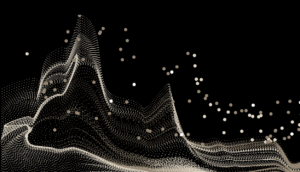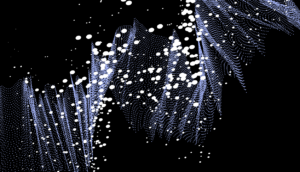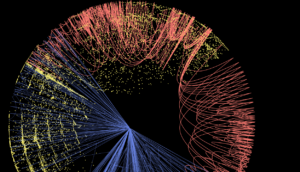post
December 16, 2021
Lessons In Hyperdisruption
At its best, technology improves the efficiency, productivity, and convenience of everyday processes while getting out of the way. As Bill Gates put it: “The advance of technology is based on making it fit in so that you don’t really even notice it, so it’s part of everyday life.”
While technological innovations have arrived piecemeal to this point, the paradigm is changing. Instead of focusing on one-off innovations, we’ve started connecting established and nascent technologies into integrated processes.
This is a pivotal moment that calls on us to rethink much of what we do and how we do it—even why we do it. It’s a massive revolution, a leapfrog moment in our evolution. This means revaulating every aspect of our relationship with technology, because we’re no longer living in an era when technology will be used to passably mimic the ways humans do things. We can now put technology to work in ways that will surpass the problem-solving abilities of humans alone. No longer will we be holding technology by the hand; it’s now the other way around.
There are two gigantic forces driving these changes hyperautomation and hyperdisruption. These two concepts are intertwined and it’s worth developing the proper framework for thinking about them.
Hyperautomation swings a mighty axe
Historically speaking, before any piece of technology becomes status quo, it must upend our worldview. Once the rock proved itself a better tool for smashing open nuts and seeds than a naked fist, it’s safe to assume nobody preferred the old way of cracking open food.
In what are now outdated models for producing technology, small steps forward take place in siloed environments. A single innovation replaces a manual task with something more efficient, productive, or convenient. There are countless examples: the electric light bulb replacing the gas-powered lamp, email supplanting the written letter, electronic marquis subbing in for printed billboards.
As impressive as these were when created, their practical application was limited. The true power of technological innovation lies in its capacity for integration with other, related innovations. When these are sequenced together in meaningful ways , their collective efficiency, productivity, and convenience increase exponentially. This process of integration is the framing for Gartner’s term, “hyperautomation.”
When Uber entered the market in 2009, it upended our collective view of transportation. The technologies it leveraged were not, on their own, mind-boggling; smartphone-based geolocation, rating systems, mobile-ready apps, and mobile payments were fairly widespread at the time. It was the seamless integration of all four that made ride-sharing an instant win, and a major disruptor to all existing transit models.
This is only the beginning, however. As more businesses and individuals find hyperautomation within reach we will see hyperdisruption on a regular basis.
Where there’s hyperautomation, there’s hyperdisruption
The next phase of our relationship with technology will be marked by our expanding exposure to hyperautomation. Imagine Uber-sized innovations cropping up once a week, as organizations of every shape and size find ways to orchestrate disruptive technology in increasingly sophisticated ways. Imagine a large number of these disruptive innovations being sewn into other disruptive innovations, or improved upon so quickly that they become irrelevant before the paint dries. In fact, this is already happening in the realm of conversational AI.
Microsoft revealed Turing-NLG in February 2020, and it was hailed as the largest language model ever, outperforming other models across multiple benchmarks. One month later, OpenAI unveiled their language model, GPT-3, which uses deep learning to create human-like text. It was powerful enough to generate news articles that were nearly indistinguishable from those written by humans (so powerful that Microsoft licensed exclusive use of the model and its underlying code). A little more than a year later, we have “China’s first homegrown super-scale intelligent model system,” Wu Dao 2.0, which is exponentially larger and performs better across nearly every metric. It can write traditional Chinese poetry and sing. Wu Dao 2.0 has also unveiled Hua Zhibing, a virtual student that can learn, draw pictures, and compose poetry. Eventually, Hua will also learn to code.
As these kinds of tools and strategies for hyperautomation are seized upon by large organizations, small organizations, and even individuals, business and technology will swirl together creating a fertile and volatile new landscape.
Stay up to date
Latest Articles


